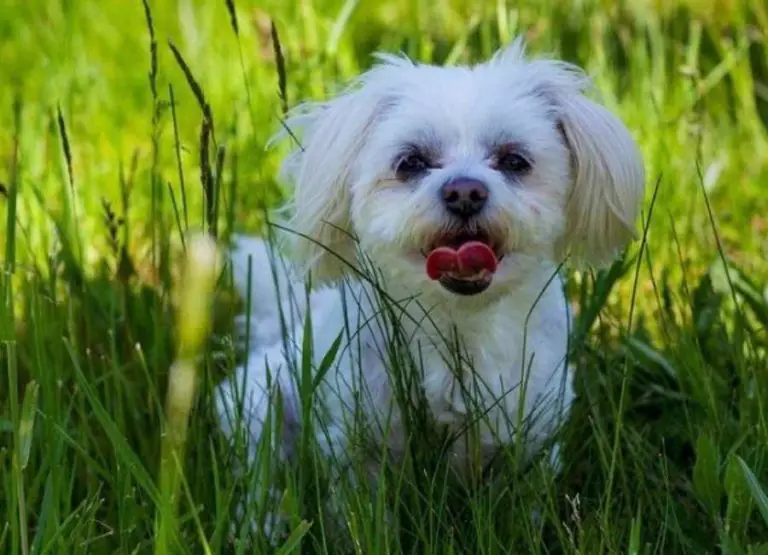Understanding Idiopathic Aggression in Dogs With Hints

Today, let’s dive into a topic that’s both intriguing and concerning: idiopathic aggression in dogs.
Have you ever wondered why some dogs display aggressive behavior without any apparent reason?
Well, buckle up, because we’re about to uncover the fascinating world of this mysterious canine behavior.
So, grab a cup of coffee and join me on this enlightening journey to understand the ins and outs of idiopathic aggression in our furry friends.
What is idiopathic aggression in dogs?
Idiopathic aggression in dogs refers to aggressive behavior exhibited by dogs without any apparent cause or trigger.
It is a term used when aggression cannot be attributed to a specific underlying medical or behavioral issue.
Consequences of Idiopathic Aggression on Dogs and Their Owners
Idiopathic aggression in dogs is a complex issue that can have significant consequences for both the dogs and their owners.
Here are some of the consequences:
1. Safety Concerns: Idiopathic aggression in dogs can pose a serious safety risk to both the dog and those around them. Idiopathic aggressive behavior can lead to injuries, both to humans and other animals. This can result in legal consequences for the owner if the dog causes harm to others.
2. Emotional Impact on Owners: Dealing with a dog that displays idiopathic aggressive behavior can be emotionally challenging for owners. They may feel stressed, anxious, and fearful about their dog’s behavior and the potential harm it may cause. This can strain the bond between the owner and the dog and lead to feelings of guilt, frustration, and helplessness.
3. Lifestyle Limitations: Owners of dogs with idiopathic aggression may need to make significant adjustments to their lifestyle. They may have to limit their dog’s interactions with other animals and people, which can impact their ability to participate in social activities or take their dogs to public places. This can lead to feelings of isolation and frustration for both the owner and the dog.
4. Training and Management Challenges: Managing and training a dog with idiopathic aggression can be challenging. It often requires the help of a professional dog trainer or behaviorist who specializes in aggression issues. Training and behavior modification techniques may need to be implemented to help manage the dog’s aggressive behavior, which can be time-consuming and require consistent effort from the owner.
5. Potential Euthanasia: In severe cases where idiopathic aggression cannot be effectively managed or treated, euthanasia may be considered as a last resort. This decision is never easy for owners and can have a profound emotional impact on them.
Potential Reasons Behind Idiopathic Aggression in Dogs
While the true cause of idiopathic aggression in dogs is still not fully understood, there are several potential reasons that may contribute to this behavior.
Here are some potential reasons behind idiopathic aggression in dogs:
1. Genetics and Breed Predisposition: Certain breeds may have a genetic predisposition to aggressive behavior. This can be due to specific genes or breed characteristics that influence temperament and aggression levels. However, it’s important to note that not all dogs of these breeds will exhibit idiopathic aggression, as individual temperament can vary.
2. Lack of Socialization: Insufficient socialization during the critical developmental period can lead to fear, anxiety, and idiopathic aggression in dogs. Dogs that have not been exposed to a variety of people, animals, and environments may become fearful or defensive, leading to idiopathic aggressive behavior.
3. Fear and Anxiety: Dogs that experience chronic fear or anxiety may display idiopathic aggression as a defensive response. Fear-based aggression can be triggered by specific situations, objects, or people that the dog perceives as threatening.
4. Pain or Medical Conditions: Dogs in pain or suffering from certain medical conditions may exhibit idiopathic aggressive behavior as a response to discomfort. It’s important to rule out any underlying medical issues that could be contributing to the idiopathic aggression.
5. Resource Guarding: Dogs that exhibit aggressive behavior when guarding their food, toys, or other valuable resources may be displaying idiopathic aggression. This behavior is often rooted in a perceived need to protect their possessions.
6. Lack of Training and Boundaries: Dogs that have not received proper training and guidance may exhibit idiopathic aggressive behavior due to a lack of clear boundaries and expectations. Inconsistent or inadequate training can contribute to behavioral issues, including idiopathic aggression.
Signs of Idiopathic Aggression in Dogs
Here are some behavioral signs and body language that may indicate idiopathic aggression in dogs:
1. Sudden and Unprovoked Aggression: Dogs with idiopathic aggression may display sudden and unprovoked aggressive behavior. This means that the aggression may occur without any apparent trigger or warning.
2. Intense Staring: Dogs exhibiting idiopathic aggression may engage in intense staring. They may fixate their gaze on a person, object, or another animal, displaying a focused and intense stare.
3. Stiff Body Posture: Dogs with idiopathic aggression may exhibit a stiff body posture. This can include a rigid stance, raised hackles (hair along the back), and a tense overall appearance.
4. Growling or Snarling: Dogs may growl or snarl when displaying idiopathic aggression. These vocalizations serve as warning signals and indicate the dog’s discomfort or aggression.
5. Lunging or Biting: Dogs with idiopathic aggression may lunge towards a person, object, or another animal. In some cases, they may also engage in biting behavior, which can be dangerous and potentially harmful.
6. Freezing or Freezing and Biting: Another sign of idiopathic aggression in dogs is freezing behavior. The dog may suddenly stop moving and remain completely still. In some cases, the freezing behavior may be followed by a bite.
How to Address Idiopathic Aggression in Dogs
Idiopathic aggression in dogs can be challenging to address because the underlying cause is unknown. However, there are practical approaches that can help manage and reduce idiopathic aggression in dogs.
Here are some strategies to consider:
Consult with a Veterinarian or Veterinary Behaviorist
It is essential to consult with a veterinarian or veterinary behaviorist to rule out any underlying medical conditions that may be contributing to the aggression. They can conduct a thorough examination and recommend appropriate diagnostic tests to ensure there are no physical causes for the aggression.
Behavior Modification Techniques
Behavior modification techniques can be effective in managing idiopathic aggression in dogs. These techniques aim to change the dog’s emotional response and behavior in certain situations. A professional dog trainer or behaviorist can help develop a behavior modification plan tailored to the specific needs of the dog. This may involve desensitization and counterconditioning techniques, where the dog is gradually exposed to the triggers that elicit aggression in a controlled and positive manner.
Environmental Management
Creating a safe and structured environment for the dog can help reduce the likelihood of aggressive episodes. This may involve managing the dog’s access to certain areas of the house or yard, using baby gates or crates to create boundaries, and providing a quiet and calm space for the dog to retreat to when needed. Ensuring the dog has regular exercise, mental stimulation, and a consistent routine can also contribute to a more balanced and relaxed state of mind.
Medication
In some cases, medication may be prescribed by a veterinarian to help manage idiopathic aggression in dogs. Medication can be used to address underlying anxiety or other behavioral issues that may contribute to aggression. It is important to work closely with a veterinarian to determine the appropriate medication and dosage for the individual dog.
Positive Reinforcement Training
Positive reinforcement training techniques can be beneficial in managing idiopathic aggression. Rewarding desired behaviors and providing consistent and clear cues can help the dog learn alternative ways to respond to triggers. Using treats, toys, and praise as rewards can motivate the dog and reinforce positive behaviors.
Avoid Punishment
It is important to avoid using punishment or aversive training methods when dealing with idiopathic aggression. Punishment can escalate aggression and create fear or anxiety in the dog, making the problem worse. Positive reinforcement and reward-based training methods are generally more effective and humane.
Consistency and Patience
Consistency and patience are key when addressing idiopathic aggression in dogs. It takes time for behavior modification techniques to take effect, and progress may be gradual. It is important to remain consistent in implementing the training and management strategies and to be patient with the dog’s progress.
Remember, addressing idiopathic aggression in dogs can be a complex process, and it is important to seek professional guidance from a veterinarian or veterinary behaviorist. They can provide a comprehensive assessment of the dog’s behavior and develop a tailored plan to address the aggression.
Preventing Idiopathic Aggression in Dogs
Prevention of idiopathic aggression in dogs involves a multi-faceted approach. Firstly, early socialization and training are crucial to ensure proper behavior development.
Secondly, providing a consistent and structured environment helps reduce stress and anxiety in dogs, which can contribute to aggression.
Thirdly, regular exercise and mental stimulation help channel their energy in a positive way. Fourthly, responsible breeding practices can help reduce the genetic predisposition to aggression.
Lastly, seeking professional help from a qualified dog behaviorist or trainer is essential in addressing any signs of aggression promptly and effectively.
Frequently Asked Questions
What are the signs of idiopathic aggression in dogs?
Signs of idiopathic aggression in dogs can vary but may include growling, snapping, biting, lunging, or displaying other aggressive behaviors towards people or other animals. It is important to note that these behaviors are unprovoked or out of proportion to the situation.
Can idiopathic aggression be treated or managed?
While there is no guaranteed cure for idiopathic aggression in dogs, it can be managed with the help of a professional dog behaviorist or trainer. They can assess the dog’s behavior, develop a tailored training plan, and provide guidance on how to safely manage and prevent aggressive episodes.
Are certain dog breeds more prone to idiopathic aggression?
Idiopathic aggression can occur in any dog breed, regardless of size or breed type. However, certain breeds may have a predisposition to aggression due to genetics or breeding history. It is essential to remember that individual temperament and upbringing play significant roles in a dog’s behavior, rather than solely relying on breed stereotypes.
Can idiopathic aggression be prevented?
Preventing idiopathic aggression involves early socialization and positive reinforcement training during a dog’s critical developmental stages. Providing a stable and enriching environment, along with proper veterinary care, can also help reduce the likelihood of aggressive behavior.
Is medication necessary to manage idiopathic aggression?
In some cases, medication may be recommended by a veterinarian or veterinary behaviorist to help manage idiopathic aggression. Medication can be used in conjunction with behavior modification techniques to reduce anxiety or aggression levels in dogs. However, it is crucial to consult with a professional to determine if medication is necessary for your specific situation.
Read more about other types of aggression.
Conclusion
In conclusion, dealing with idiopathic aggression in dogs can be a challenging and sometimes frustrating journey.
However, with patience, understanding, and the right professional guidance, it is possible to manage and even overcome this behavior.
Remember, your dog is counting on you to be their advocate and provide the love and support they need to thrive.

![How to Entertain a Dog Home Alone [12 Top Hints] How to Entertain a Dog Home Alone](https://petcreeks.com/wp-content/uploads/2023/12/pexels-karolina-grabowska-5942489.jpg)
![How to Stop Aggression in Dogs [12 Strategies] Stop Aggression in Dogs](https://petcreeks.com/wp-content/uploads/2023/10/guard-dog-3494494_640.jpg)



![Fear Aggression in Dogs [Signs, Causes & More] Fear Aggression in Dogs](https://petcreeks.com/wp-content/uploads/2023/10/barking-1819740_640.jpg)